
Cornelia McDavid is my 3rd Great Grandmother. She was born into slavery in Madison County, Hazel Green, Alabama around the year 1851, lived in Noxubee County, Mississippi, and is speculated to have died between 1910 and 1920 in Mississippi.
This is the story of how I discovered Cornelia through genetic genealogy and how her genetic legacy lit the path to finding my paternal Grandfather and 2 generations of grandmothers who preceded her.
Why Cornelia’s Story is Special to Me
Anyone who’s researched their family history knows that undeniable sense of connection felt at the discovery of certain ancestors. A pure reverence punctuated with an intense awareness of the genetic code that’s contributed to your biology – when you sense the aspects of your Ancestor’s wisdom alive as you. Something about Cornelia, perhaps everything about her story, captures my heart in this way.
The discovery of Cornelia was part of a broader genetic genealogical research project undertaken to find my paternal Grandfather in 2017. Being the first ancestor I discovered in this mystery line, Cornelia served as an introduction to my McDavid, Ellis, Taylor, Ledbetter, and Thompson lines in Noxubee County, Mississippi.
Our shared segments of DNA with present-day aunts, uncles, and cousins eventually lead me to paternal Grandfather. When I was blessed to meet the family my father never knew in 2018, I was able to share Cornelia’s story with a few of her grandchildren.
Meanwhile, Cornelia’s genealogical paper trail has taken me back to the 18th Century and helped other African-American McDavid descendants discover this familial story, which until now, has not been thoroughly documented.
Daddy’s Last Wish
This body of work, and the research that’s evolved from it, is dedicated to my Daddy, Cornelia’s 2nd Great Grandson. As he realized his life on Earth was coming to an end in 2011, he opened the door and invited me to discover the identity of his Father. This was his last wish and the only thing he ever asked of me. He wasn’t asking for himself – he knew this research would be a sacred experience for me.
I’m honored to discover the answers to questions this little boy faithfully projected out into the ether, in both prayer and despair, about his parentage.
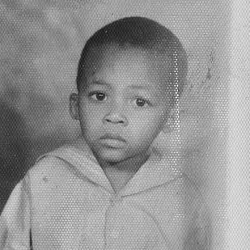
How I Found Cornelia Using Genetic Genealogy
The research goal: document the genetic and genealogical trail that leads to my paternal Grandfather.
With just a few speculative clues that had been passed down through oral history, genetic genealogical research and an unwavering determination were all I had to work with. My DNA was the only available sample of reference at the time.
The genealogies of my maternal and other paternal line were well-documented, so matches to my mystery line were apparent. Kinfolk I could confidently assign as members of my unknown Grandfather’s family were estimated to be 3rd – 5th cousins. The closest match among them matches at 105 centimorgans across 6 segments. 105 shared cM may indicate a variety of kinships including 2nd, 3rd, or 4th cousins (and a host of half-cousin and double cousin scenarios).
Thankfully, this match is connected to a well-sourced family tree. This is vital because DNA test results need genealogical evidence to be validated.
DNA tests don’t measure tangible matter (like a DNA strand) and the results are not always absolute. They measure patterns and resulting probabilities. Though this key Match was revealing part of my lineage, genealogical research was required to capture tangible evidence that may prove or disprove an array of probable kinships.
Establishing the Genealogical Foundation for DNA Research
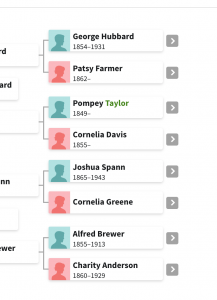
Identifying key matches then fully documenting the common genealogical line(s) of each is an essential step – if you really want to know your biological connection to a DNA match.
In this case, I was researching forward to recent generations based on genetics (instead of working back in time based on genealogies) and had no clue about which of my Key Match’s grandparents were also mine. Considering shared cMs, our ages, and data gleaned from shared match comparisons I zeroed in on her great grandparents.
Just knowing at least one of my grandparent’s names were among these 8 people was a tremendous and heartfelt development for me. The surnames Hubbard, Farmer, Taylor, Davis, Spann, Greene, Brewer, and Anderson were each considered through systematic genealogical research coupled with analysis of shared matches.
Ancestral patterns among our shared DNA matches were documented in my genetic family tree. Exploring the genealogies of shared matches provided a broader view of 19th Century Noxubee County, Mississippi. Familial alliances and marriages among African Americans in the community, and the enslaving families (reflected in the surnames noted above), clarified kinship to many other DNA matches.
It soon became clear that most of the DNA matches shared with the DNA Match of focus have two people in common: Pompey Taylor and Cornelia Davis.
Cornelia’s Surname Provides the Breakthrough
The Davis surname had been copied from tree to tree without a cited source. It became apparent that Davis was a variation of another name.
A search on Ancestry.com for evidence of their union lead to Pompey and Cornelia’s marriage certificate. This was my official introduction to the entire paternal line I was researching! The documented surname of McDavid was the clue that ultimately brought Cornelia’s story to light.
Coincidentally, this certificate was officially recorded 100 years to the day before my birth. A fun and synchronistic sign, indeed.
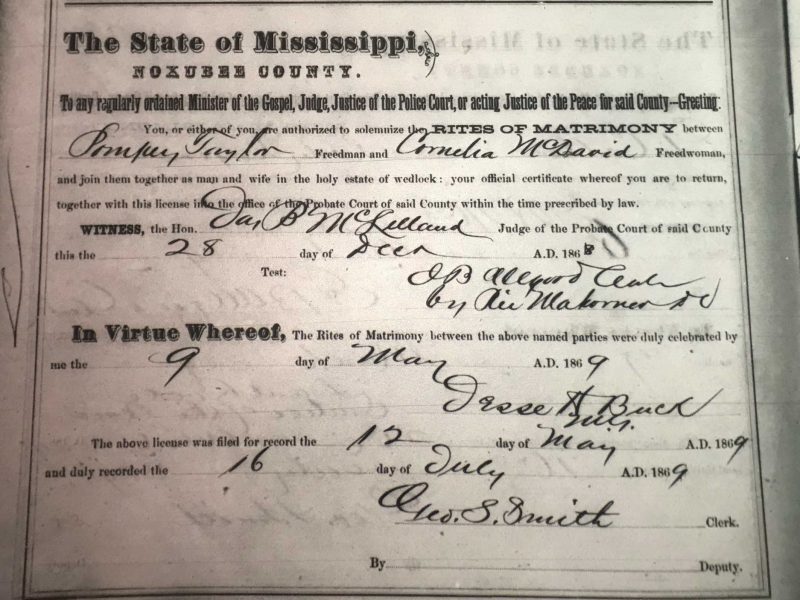
The New Research Goal: Who is Cornelia McDavid?
The goal of finding my Grandfather (temporarily) became secondary to learning my Grandmother Cornelia’s story. We were certainly related, but I didn’t know if she was my 2nd, 3rd, or 4th Great Grandmother. I instinctively felt knowing her experience was a requirement for becoming acquainted with my paternal ancestors, and fully embracing this aspect of human history from which I descend.
Assimilating Historic Facts and Genetic Evidence
Cornelia’s Genealogical Paper Trail
- Though born around 1851, Cornelia wasn’t showing up in the U.S. Census, or any other records until 1870. This indicates a high probability of enslavement.
- While the surname McDavid is documented on her marriage certificate, her maiden name is later documented on family trees (without source citations) as Davis and David.
- Cornelia’s place of birth was consistently documented as Alabama in US Census records.
- Cornelia’s mother and father were documented as Alabamans in census records throughout her life.
Where was Cornelia prior to 1869?
Comprehensive research of slave-owning families is a prerequisite to finding enslaved ancestors.
I began with McDavids in Noxubee where Cornelia was living just after Emancipation (as documented on the marriage certificate). U. S. Census Slave Schedules revealed the following slave-owning McDavids in Noxubee, County Mississippi in 1860:
- N. A. McDavid
- S. P. McDavid
- L. B. McDavid
- W. S. McDavid

“United States Census (Slave Schedule), 1860”, database with images, FamilySearch (https://familysearch.org/ark:/61903/1:1:WKLY-1MZM : 16 October 2019), S P McDavid, 1860.
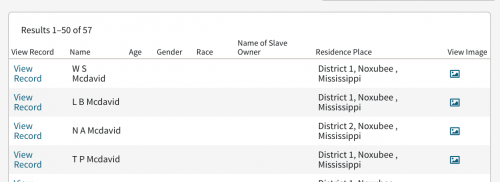
Of note: Stephen Patrick McDavid listed as S. P. on FamilySearch and T. P. on Ancestry.com search results due to transcription differences.
Typically, slave schedules only document our enslaved ancestors as male or female, by age, and as either black or mulatto. While the slave schedules didn’t help much in this phase of research, they would later prove to be insightful.
Genetic Genealogical Considerations for African American Research
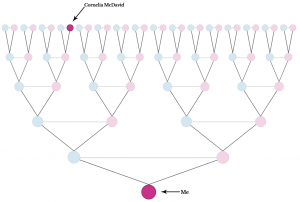
Based on genetic evidence and birth years, I approached this research theorizing Cornelia to be my 3rd Great Grandmother.
Though I’d established the biological connection to Cornelia and Pompey, no genealogical evidence had been published about them prior to 1869. Just as the biological connections to Cornelia were evidenced among my DNA matches, so too were those revealing her parents (my 4th great grandparents). Of course, I want to know who they are too!
Documenting Enslaving Families Is A Requirement
When researching enslaved people, examining the genealogies of slave-owning families (including those who married in) is an essential first step.
As enslavers (and those connected to them) often impregnated enslaved women, adding them to the genetic family tree is necessary when the parentage of enslaved ancestors isn’t documented. Enslaving grandparents of African-American descendants are sometimes identified through DNA match analysis tied to enslavers, overseers, and the like. This lights the way to documentation about enslaved ancestors and leads to the addition of newly discovered branches of genetic heritage.
Points of Consideration for DNA Analysis
Researching Cornelia’s parentage for clarity about her early life with DNA would involve 5th cousin matches. Due to the realities of North American slavery practices, I’d possibly be analyzing half-5th cousin matches.
- Cornelia is just one of 32 3rd great grandparents being revealed by thousands of DNA matches.
- Researching Cornelia’s parents requires an analysis of those estimated as 4th – 8th cousins.
- Viewing DNA matches of an elder descendant of this line would be ideal.
- Approximate shared centimorgans with 5th cousins range from 6 cMs – 20 cMs.
- The probability of genealogical DNA tests detecting a 5th cousin is about 10% – 30%. So, only about a fifth of 5th cousins who’ve submitted DNA can be detected with commercial genealogy DNA tests. (We don’t match every cousin through DNA testing because we don’t inherit 100% of each of our parent’s DNA).
- I’m working with fellow relatives of Cornelia who’ve submitted DNA to Ancestry.com (my primary tool of choice for this research project).
Based on these considerations, while distant DNA matches may provide clues, I knew genealogical evidence would be the primary method of discovering Cornelia’s life story and our biological connection.
Distant McDavid DNA Matches Informed the Genealogical Research
My matches to enslaving McDavids are distant, as expected when going back 6 – 8 generations. I explored clues presented in the trees of DNA matches to determine which McDavid line Cornelia may have ties to. Though the majority of my McDavid DNA matches have no family trees attached to their DNA test results, the common thread among those who do is Patrick McDavid of South Carolina (1720 –1783).
Also indicated among the trees of matches are Patrick’s children:
- Rosanna McDavid (b. 1778 in SC – d.1854 in Noxubee Co, MS)
- William McDavid (b. 1760 in SC – d. 1815 in AL ), who was married to Nancy Dorroh (b. in Ireland 1766 – d. in AL 1840). They were enslavers in Hazel Green, Madison County, Alabama.
Considering Cornelia’s documented roots in Alabama, and her debut in the US Census records in Noxubee County in 1870, I decided to first follow the clues into the genealogies of William McDavid and Nancy Dorroh. As I documented their descendants, I discovered the 4 people on the 1860 Noxubee County, Mississippi Slave Schedules were grandchildren of William and Nancy.
I could have researched the 4 McDavids enumerated as slave owners first, but I often like to see where the DNA will guide me. All paths eventually lead to discovery.
William McDavid and Nancy (Dorroh) McDavid’s Sons

I began studying their 3 sons (all of which were born in Laurens County, South Carolina and died in Madison County, Alabama):
- William McDavid (1793 – 1842)
- James L. McDavid Sr. (1795 – 1842)
- Patrick McDavid (1801 – 1842)
As they were each deceased at the time of Cornelia’s birth, research of their children became my focus – specifically wills and probate records of the McDavid clans in Alabama and Mississippi. As an aside, I may one day research the reason(s) they each died in 1842.
I discovered the 4 McDavids mentioned in the Noxubee County slave schedules were children of James L. McDavid Sr.
Wilson Steele VanBuren McDavid (1836–1888)
Wilson, son of James L. McDavid Sr. and Nancy (Clayton) McDavid, was a native of Hazel Green, Madison, Alabama. He was enumerated in the U. S. Slave Schedules as W. S. McDavid in Macon, Noxubee County, Mississippi in 1860.
As he died after emancipation, I had no hope of leveraging wills and probate records to find details about the people he enslaved. However, more in-depth research of Wilson revealed probate records referencing an enslaved child named Cornelia in the settlement of his brother’s, James L. McDavid Jr., estate.
James L. McDavid Jr.
James Jr., also a son of James and Nancy, was born in 1831 in Lincoln County, Tennessee. He died “interstate” according to probate records on August 28, 1855.
Inventory of Assets listed in the Probate Records for James L. McDavid Jr. on November 6, 1855
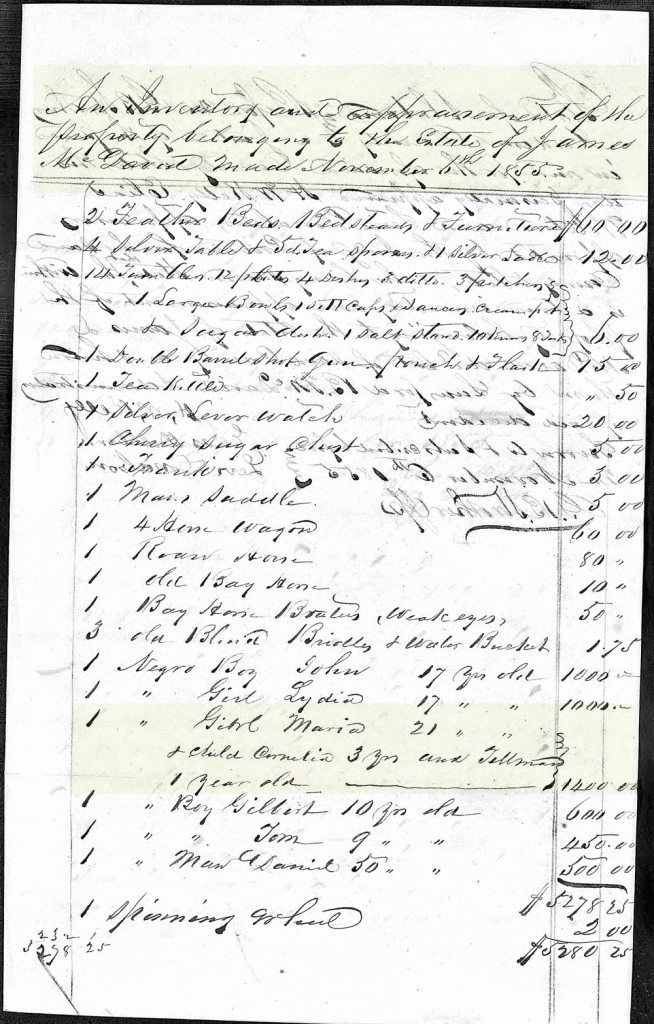
At the time of his death, James was 24 years of age. I’ve found no record of a marriage or children. He resided in Hazel Green, Alabama and enslaved the following people:
John (age: 17 b. 1838)
Lydia (age: 17 b. 1838)
Maria (age: 21 b. 1834)
Cornelia (age: 3 b. 1852)
Tillman (age:1 b. 1854)
Gilbert (age: 10 b. 1845)
Tom (age: 9 b. 1846)
Daniel (age: 50 b. 1805)
Could this be my Cornelia?
- I’d found a child, born about 1852 in Alabama.
- She and her mother, Maria, were owned by James McDavid Jr. who died in 1855.
- James was a son of James Sr., and grandson of William McDavid and Nancy Dorroh, which aligns with commonalities among distant McDavid DNA matches.
- My Grandmother was documented in Noxubee County, Mississippi in 1869. The next task was to assimilate the artifacts at hand to see if any evidence places this enslaved child named Cornelia in Noxubee, Mississippi after Emancipation.
Cornelia, Tillman, and Maria Sold by Auction on March 8, 1856
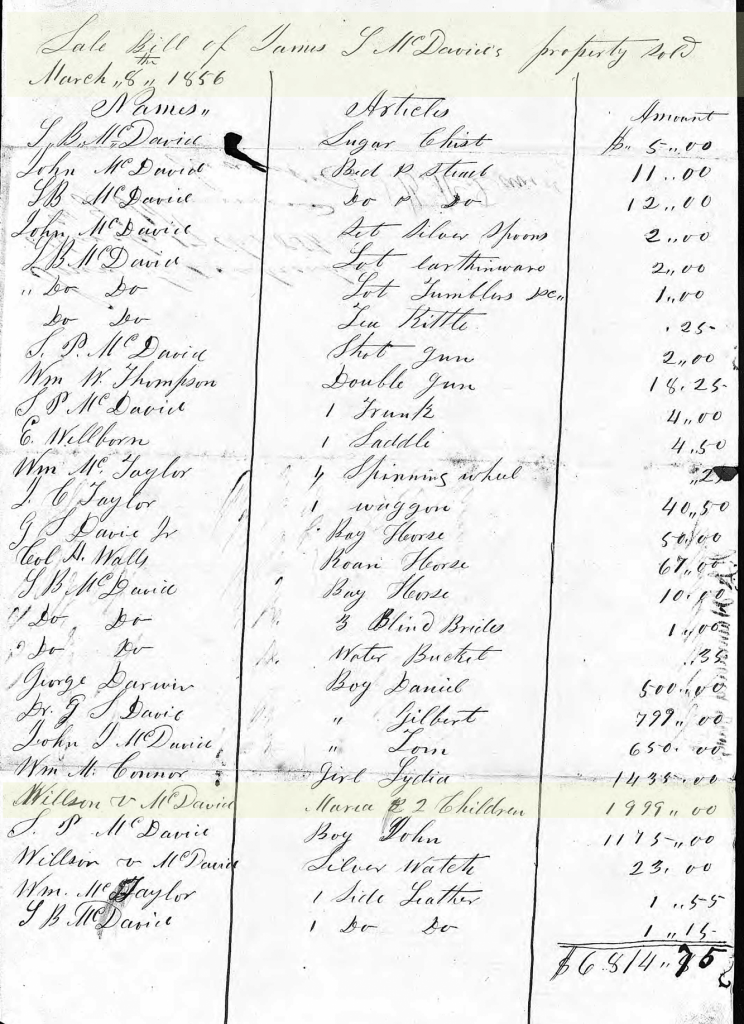
As this bill of sale indicates, Maria, Cornelia, and Tillman were SOLD to Wilson Steele McDavid (aka W. S. McDavid) for $1,999 on March 8, 1856. That equates to about $59,274.03 in 2020 (According to “$1,999 in 1855 → 2020 | Inflation Calculator.” Official Inflation Data, Alioth Finance, 27 Feb. 2020).
As referenced above, W. S. McDavid was enumerated in the 1860 Slave Schedules in Noxubee County, Mississippi. He’d been enumerated in Madison County, Alabama in prior census years, and would return to Alabama with his family by 1880.
This Is My Cornelia
As W. S. McDavid’s records placed this enslaved child named Cornelia in Noxubee, Mississippi around 1856, and no other record of anyone else named Cornelia McDavid has been discovered in Noxubee County’s post-Emancipation records – I’m confident that this is the Cornelia I’m biologically connected to.
The genealogical evidence discovered since has validated this theory many times over.
Soul-Centered Research Queries about the Auction
I can’t imagine, don’t want to imagine, but have to imagine Maria, with her young children waiting to discover their fates as James’ estate was they were auctioned off. I wonder…
- What did she say to her babies about this auction in the days before?
- What did she say to them on the day of (knowing they could be taken away)?
- What was Maria thinking?
- What was she imagining?
- What did she know?
- How did the inspection of her body, by eye and hand, feel to her Being?
- How did she manage the emotionality of watching the inspections of her children?
- Her 4-year-old daughter and infant son were inspected, measured, appraised. Their fates were in the hands of the highest bidder.
- What did she say to her babies while on display?
- Was she able to hold them?
- Was she hysterical, or numb, or seated in her Soul?
- Did Maria know they’d remain together?
I can’t imagine, but I have to imagine. Her experiences altered the genetic code she’s passed to me. The DNA trail that leads me to Maria McDavid is alive as me. I imagine and see clearly the remnants of cultural and familial legacies still at play today, and I’m grateful – as clarity is the prelude to healing and evolution.
Dearest Grandmother Maria, thank you.
Your will to survive has brought me forth. I love you eternally.
About Wilson Steele McDavid
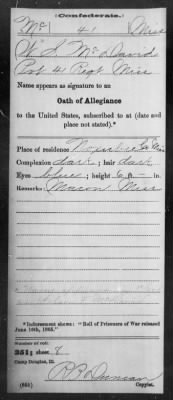
- Wilson was 20 years old in 1855 when he acquired John, Lydia, Maria, Cornelia, Tillman, Gilbert, Tom, and Daniel.
- He married Nancy Thompson (b. 1840 Alabama – d. 1911 Alabama) in 1858.
- In 1860 census records his real estate was valued at $6,000 (about $186, 500 in 2020).
- His personal estate was valued at $10,000 (the equivalent of $311,000 today). The valuation of Wilson’s estate included my family.
- Wilson joined the Confederacy in 1862 and was captured as a prisoner of war in Marietta, Georgia in 1864.
- He was released from Camp Douglas in Chicago, Illinois in 1865.
- According to military records:
- his residence was Macon, Mississippi
- Complexion: Dark
- Hair: Dark
- Eyes: Blue
Back to 1940’s St. Louis, Missouri
Upon documenting Cornelia’s transition from James McDavd Jr.’s estate to Wilson S. McDavid’s estate, my research refocused on the primary research goal of determining the identity of my paternal Grandfather.
I would later return my focus to where I left off in 1860 and discover a broader story about my 4th Great grandmother, Maria McDavid, her mother (my 5th Great Grandmother) Nancy McDavid, and about 70 other people enslaved by this line of McDavids.
How Cornelia and Pompey’s Genetic Legacy Guided Me to My Grandfather
Discovering Cornelia was the first of many revelations on the journey of identifying my Grandfather.

The next phase of the research involved documenting the genealogies of Cornelia and Pompey’s 9 surviving children, then researching associated DNA matches. Genealogy research traditionally begins in the present then follows an evidential paper trail back in time. In this case, as DNA matches reveal the distant past, I followed an evidential genetic trail from the distant past to the present.
While it was clear none of their children were my mystery Grandfather, my kinship to Cornelia and Pompey was further validated in this phase with multiple DNA matches connecting me to my 2nd Great Grandmother, Bessie (Cornelia’s daughter).
Discovering Bessie (Taylor) Ellis and Reverend James A. Ellis
Research of the union between Cornelia’s daughter, Bessie (Taylor) Ellis (b. 1871 Noxubee, Mississippi – d. 1962 in Noxubee, Mississippi) and the Rev. James A. Ellis (b. 1867 in Mississippi – d. 1939 in Noxubee, Mississippi) illuminated multiple close Ellis DNA matches. I was then able to identify a cluster of Ellis matches who are also direct descendants of Bessie and James, and quite a few who connect me to Aaron Ellis ( James’ Father b. 1820 in Mississippi). This Ellis line and their American experience will be further explored and documented here in the future.
I was definitely on the right track and just 2 generations away from knowing the identity and the story of my Grandfather.
Discovering Celestia Belle (Ellis) Ledbetter and Walter Cleveland Ledbetter
Celestia (Ellis) Ledbetter (b. 1891 in Macon, Noxubee, Mississipi – d. 1970 in St. Louis, Missouri) was the first of 15 children born to James and Bessie. As 1 of the 15 children was most likely my Great Grandparent, I intended to document the lives of each and every one. Fortunately, I began my research with the firstborn child, Celestia, and didn’t have to develop the genealogies of all of James and Bessie’s 15 children.
Celestia was married to Walter Cleveland Ledbetter (b. 1886 in Mississippi – d. 1967 in St. Louis, Missouri). This enlightened close Ledbetter DNA matches, a few of which were also matching common Ellis descendants.
Discovering my Grandfather, Leon Reginald Ledbetter
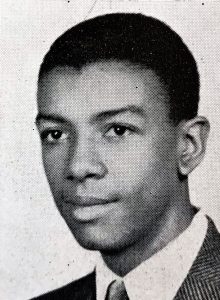
Walter and Celestia lived a few blocks away from my Grandmother and my Father in St. Louis, Missouri. Their son Leon and my Grandmother were in the same graduating class at Sumner High School in 1939, which was the clue that confirmed the meeting of my Daddy’s parents. The picture of Leon is from my Grandmother’s yearbook.
While I only have 9 DNA matches to my Ledbetter cousins (few in this line have tested), I discovered hundreds of fellow descendants on Facebook. Of all my cousins, the one I chose to DM first responded within minutes.
He grew up knowing my Grandfather and immediately began sharing his memory of their time together.
A Gathering That Was 75 Years in the Making
My Dear Cousin personally introduced me to the family Daddy always wondered about in the days leading up to Christmas in 2018. It was slightly surreal and absolutely wonderful. The 30+ cousins we met were welcoming and warm and I’ve yet to meet a stranger among them. Though my Grandfather and great grandparents transitioned long ago, our cousin reunion was powerful and so full of meaning that I’ve struggled to write about it. No words can capture the honor of fulfilling Daddy’s last wish and knowing our family.
A Key Ancestry DNA Match I Hadn’t Documented
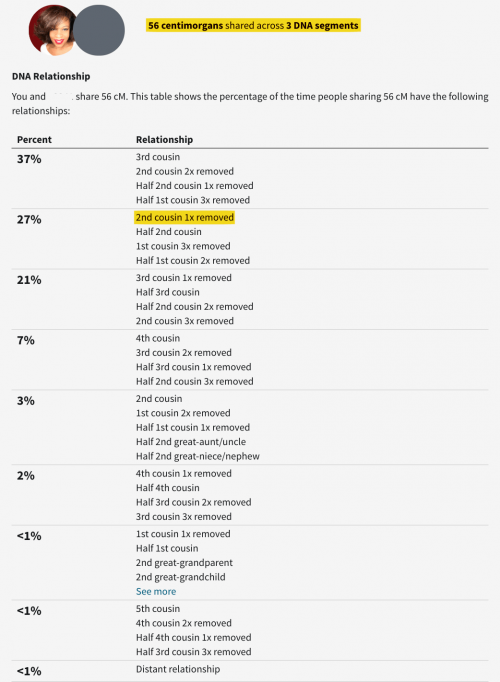 After the initial contact with my Cousin on Facebook, I discovered he was among the 9 Ledbetter DNA matches on Ancestry.com. His Great Grandfather and my 2nd Great Grandfather is Benjamin Franklin Ledbetter Sr. (b. 1845 in North Carolina – d. 1916 in Noxubee, Mississippi).
After the initial contact with my Cousin on Facebook, I discovered he was among the 9 Ledbetter DNA matches on Ancestry.com. His Great Grandfather and my 2nd Great Grandfather is Benjamin Franklin Ledbetter Sr. (b. 1845 in North Carolina – d. 1916 in Noxubee, Mississippi).
Though estimated to be 4th – 6th cousins, we’re actually 2nd cousins 1x removed.
I’d traveled back in time to Cornelia in 1869, then worked my way to 2018 to find this key DNA Match on Facebook who’d been in my list of matches all along.
This goes to show – you can never predict exactly how you’ll find your way to the truth with genetic genealogy. The key is following the genealogical and genetic evidence even when it may all seem to be leading nowhere, or everywhere at once.
Walking Through That Old 1870 Brickwall with Genetic Genealogy
An extraordinary number of family trees grace my view every day – many of which are just 1 documented fact away from revealing branches believed to be hidden behind the 1870 African American genealogical brick wall. DNA proves that the research wall is now often non-existent.
As DNA analysis provides biological evidence, genealogical research and dedicated analyses reveal the earthly stories that have so vitally contributed to ours. I hope this account of how I discovered Cornelia and hundreds of her descendants with genetic genealogy provides guidance on, and the inspiration to, walk straight through that old concept of a wall and into your ancestors’ embraces.
And the Silenced Ones May Speak Again
The enslaved souls sold on March 8, 1856, to Wilson S. McDavid (documented above) represent a family unit. Maria, Gilbert, and Lydia were siblings, their mother Nancy (Cornelia’s Grandmother) had been placed with Gabriel Shelton Davie (widower of Brancy Ann McDavid) on December 29, 1856.
Nancy (aka Nanna) McDavid was part of Brancie Ann Davie‘s inheritance from the estate of James L. McDavid Sr. Brancie was 5 years old when she became the legal owner of Nancy, who was about 60 years of age. I’ve documented key events in the lives of the McDavid’s and the tangible impacts on the 70+ people they enslaved here:
Enslaved People Documented in the Estate Records of James L. McDavid Sr.
An Open Invitation to McDavid Descendants
An important purpose of this article is to leave digital breadcrumbs for other researchers and family members interested in learning about the lives of those who’ve brought us forth. We each have knowledge (oral history and artifacts) to contribute that stand to enlighten our legacies for ourselves and our descendants.
I’m always open to connect and collaborate with fellow descendants of Cornelia McDavid Taylor and Pompey Taylor’s children:
Walker Taylor (1869 – 1932)
Bessie Taylor (1871 – 1962) – my 2nd Great Grandmother
Tim Taylor (1875 – ?)
Lewis Taylor (1879 – ?)
Pompey Taylor Jr. (1879 – ?)
Gilbert Taylor (1883 – ?)
Amos Taylor (1885 – 1950)
Joe Lee Taylor (1887 – 1959)
Carrie Taylor (1890 – 1958)
If you spot your kin on this list and have questions, want to collaborate, or just say hello – please reach out. If you have family pictures of our ancestors, I’m here to help you digitize and document them so they may be added to our collective Human story.
Are We a Match?
If you’re a DNA match to me, whether through slave-owning or enslaved lines, definitely reach out, Cousin! If you’re not sure how we’re biologically connected, I’m open to share what I know and learn from you to figure out who our common ancestors are.
In the meantime, this article will continually be updated as my research of Cornelia evolves. Rest assured, an article further exploring the life of Pompey Taylor will be published here in the future.
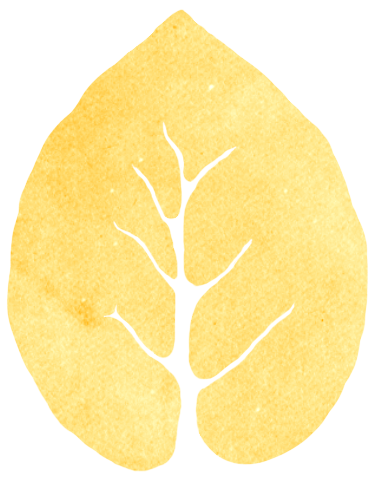
With unconditional Love and gratitude to Nancy, Maria, Cornelia, Tillman, Lydia, John, Gilbert, Daniel, and Tom.
They were here and they matter!
My existence is proof.

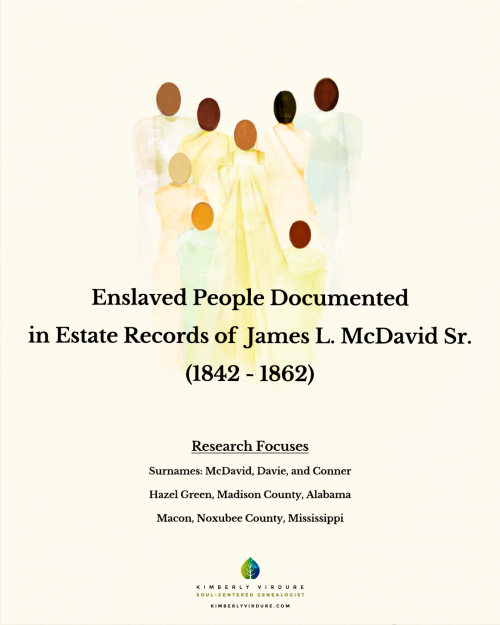

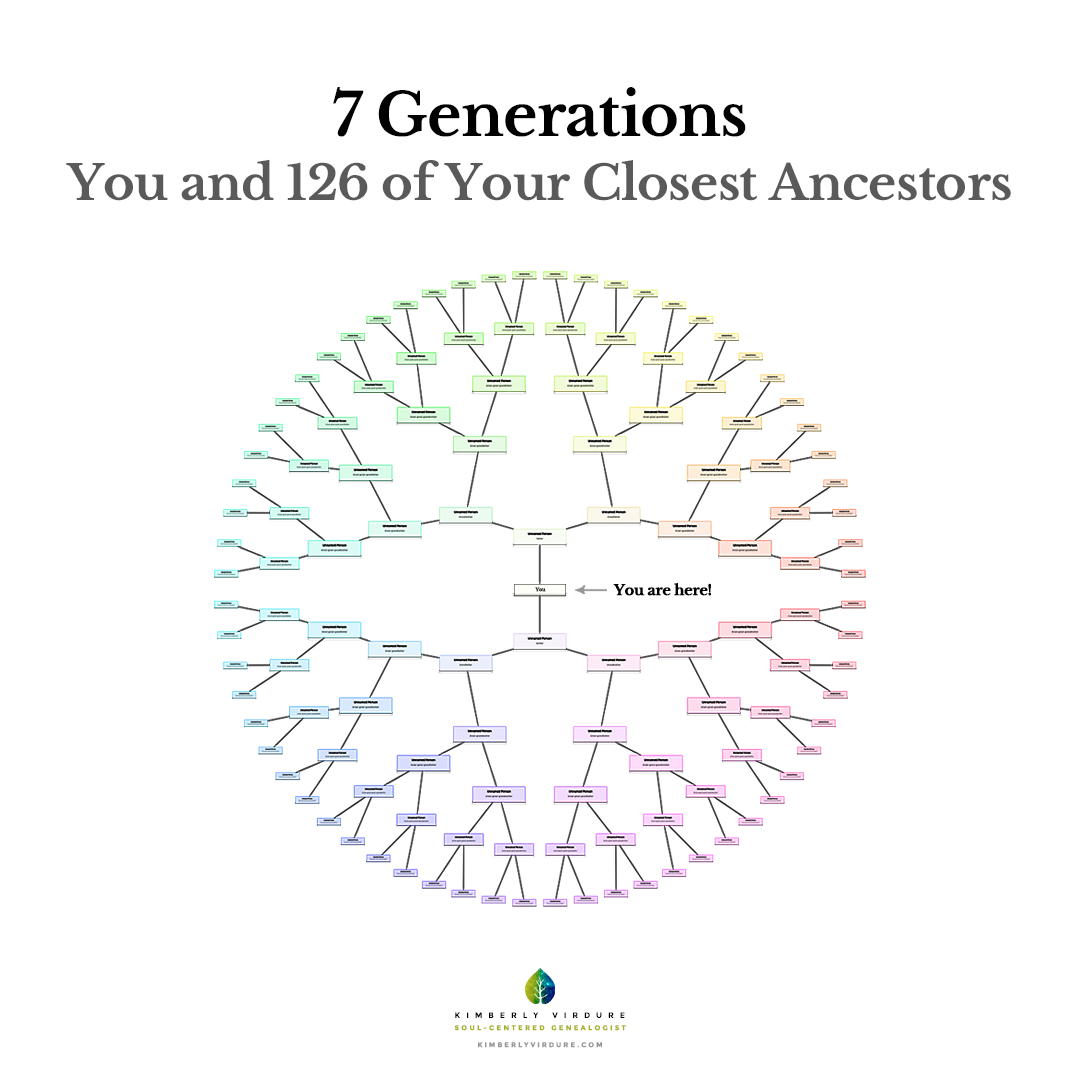
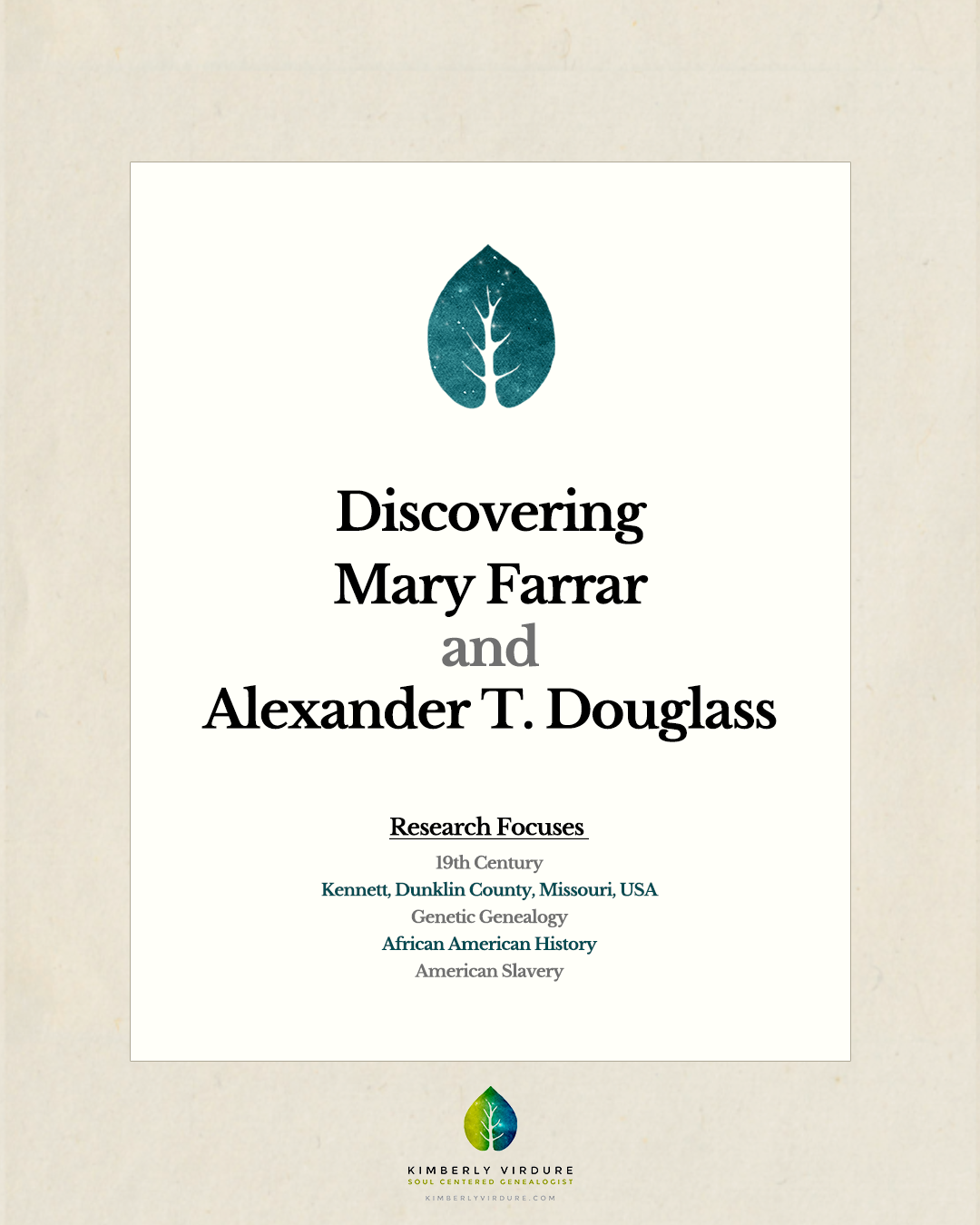
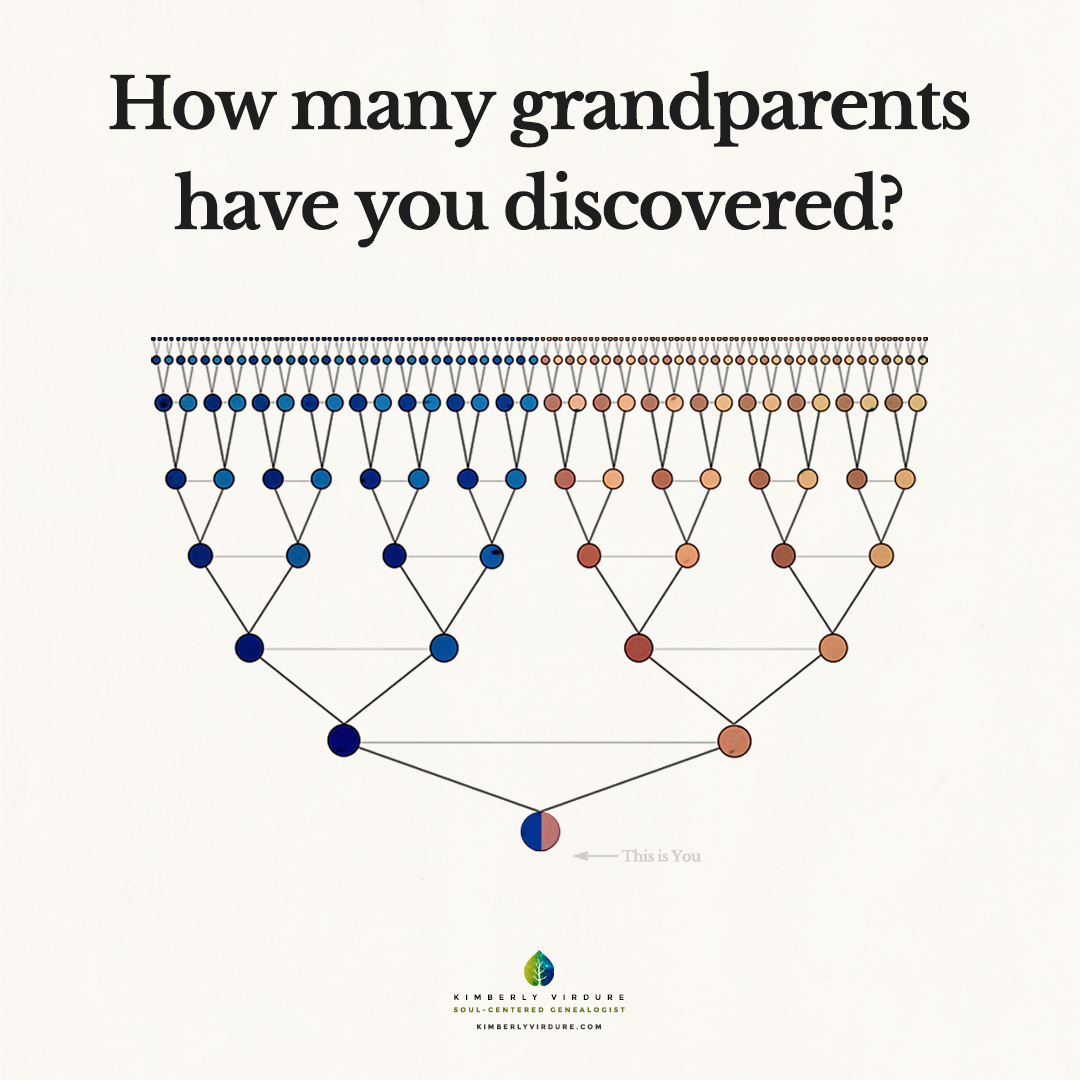

Leave a Comment